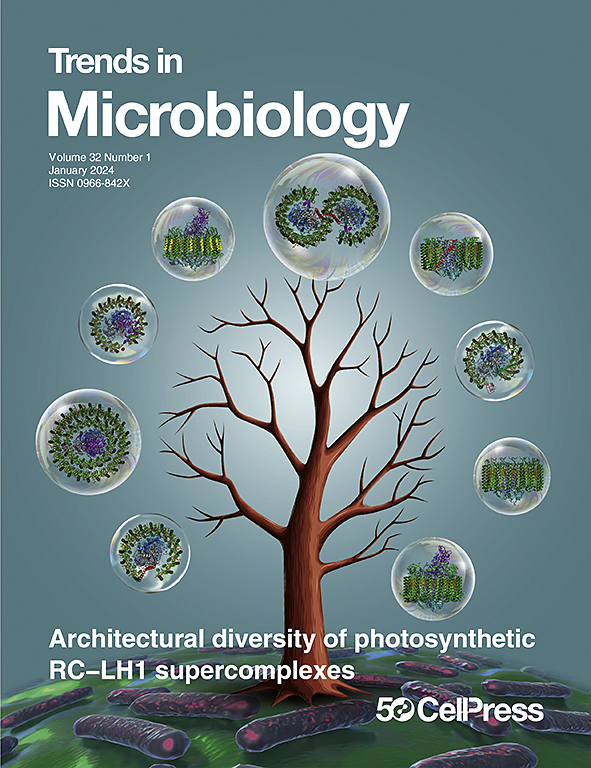NCR肽在植物-细菌共生中的应用及其重要性。
IF 14
1区 生物学
Q1 BIOCHEMISTRY & MOLECULAR BIOLOGY
引用次数: 0
摘要
某些豆科植物在与固氮土壤细菌建立共生关系的同时,会产生结节特异性的富含半胱氨酸的肽。这些肽将细菌转化为终末分化的非复制类细菌。在这里,我们讨论了这些肽的性质,必要性,新兴的临床和农业应用,以及研究这些肽的详细作用机制的必要性。本文章由计算机程序翻译,如有差异,请以英文原文为准。
NCR peptides in plant-bacterial symbiosis: applications and importance.
While establishing symbiotic relationships with nitrogen-fixing soil bacteria certain legumes produce nodule-specific cysteine rich peptides. These peptides turn the bacteria into terminally differentiated non-replicative bacteroids. Here, we discuss the properties, essentiality, emerging clinical and agricultural applications, and the need to study the detailed mechanism of action of these peptides.
求助全文
通过发布文献求助,成功后即可免费获取论文全文。
去求助
来源期刊

Trends in Microbiology
生物-生化与分子生物学
CiteScore
25.30
自引率
0.60%
发文量
193
审稿时长
6-12 weeks
期刊介绍:
Trends in Microbiology serves as a comprehensive, multidisciplinary forum for discussing various aspects of microbiology, spanning cell biology, immunology, genetics, evolution, virology, bacteriology, protozoology, and mycology. In the rapidly evolving field of microbiology, technological advancements, especially in genome sequencing, impact prokaryote biology from pathogens to extremophiles, influencing developments in drugs, vaccines, and industrial enzyme research.
 求助内容:
求助内容: 应助结果提醒方式:
应助结果提醒方式:


